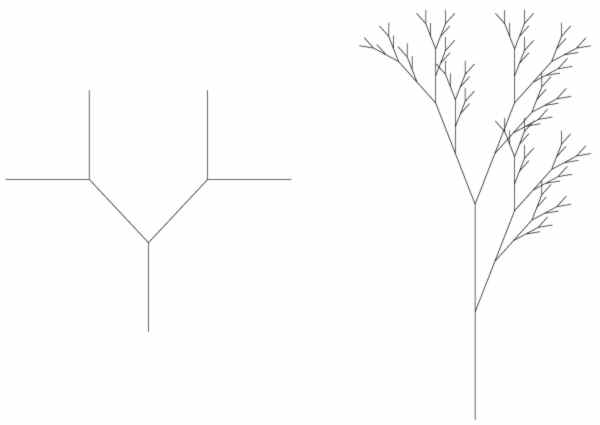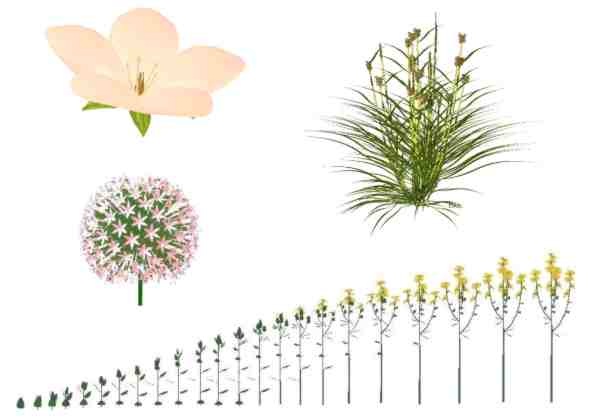L-SystemsL-systems were introduced in 1968 by Aristid Lindenmayer. Originally designed for the modelling of plant topology, their capabilities have been extended enormously over the years to transform them into a widely used modelling tool for plant geometry capable of producing botanically realistic results. BasicsL-systems are a special kind of string rewriting grammars. They rewrite a given string (a sequence of symbols) according to a grammar, i.e. a set of rules. To give an example, the single rule a → b a b transforms the string "a b a c" into "b a b b b a b c". Such an example may seem academic, but when a meaning is given to the symbols, such grammars turn into a powerful and intuitive tool for the description of models of botany and other disciplines. Usually, a geometric meaning is given to the symbols, the so-called turtle interpretation. For example, the symbol F commands a virtual turtle to move forward and draw a line, the symbols +/- lead to a left/right turn by a given angle. The snowflake (Koch-) curve can be generated using only these three symbols and an angle of 60°: An initial triangle is represented as the string "F + + F + + F", Koch's replacement step is coded by the single rule F → F - F + + F - F. The first two derivation steps of this simple L-system are shown in the following figure.  BranchingMost plants (if not all) exhibit branching structures. In order to represent branches within the concept of string-based L-systems, Przemyslaw Prusinkiewicz introduced bracketed L-systems which use the brackets [ and ] as delimiting symbols for branches. A simple binary tree is produced out of the initial string X by the rule X → F[+X][-X], a two-dimensional plant-like structure by the two rules X → F[+X]F[-X]+X and F → FF, see the following picture. X is a symbol without a geometric meaning.  More Computer GraphicsOver the years, the set of turtle commands has been considerably enlarged with sophisticated computer graphical elements: Prusinkiewicz and others have defined commands for polygons, extrusion surfaces, textures etc. Here are some L-system-generated images. For more "pretty pictures", have a look at the gallery.  LimitsThere are constraints inherent in the formalism of pure L-systems which limit their field of application. Especially the modelling of global interactions like shadowing or environmental influences is difficult within the scope of pure L-systems. To overcome these problems, extensions have been made:
|